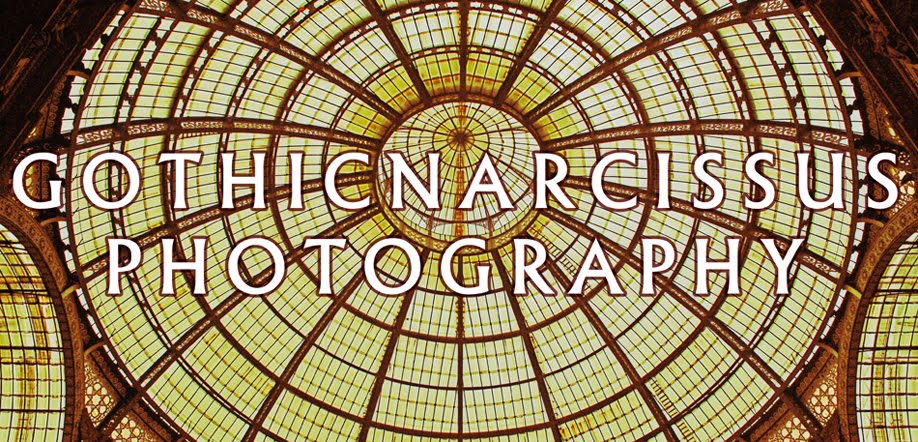Credits:
Photo, concept, manipulation, frame design: GothicNarcissus
Model, make up: Ayl Rose
Hair, styling: Ayl Rose and GothicNarcissus
Additional resources: Amptone-stock (textures), Alegion-stock (wings), Jen-ni (star brushes)
Similarly to her “twin brother”, I first found out about Astarte as a Demon thanks to Kaori Yuki’s Angel Sanctuary. Although largely outshone by her fascinating brother, I quite grew fond of her character and her relationship with him so, when I decided that I would eventually shoot the Infernal Lords, I wanted her in – also to have some more female characters in the series.Model, make up: Ayl Rose
Hair, styling: Ayl Rose and GothicNarcissus
Additional resources: Amptone-stock (textures), Alegion-stock (wings), Jen-ni (star brushes)
 |
| Astarte from Kaori Yuki’s Angel Sanctuary. |
Like Astaroth, both the physical appearance and the general characterisation of this Demon are largely reminiscent of Kaori Yuki’s version, also because the information I could found about Demon-Astarte was really scarce. Before reading the manga, I only had some general knowledge about the Semitic goddess, roughly corresponding to other figures such as Ishtar, Anat, Isis, and Aphrodite, but didn’t know anything about her adoption into the Christian pantheon-in-disguise as a Demon. When I tried to look for something about her Demonic self, I only found “behind the scenes” stuff about the goddess, how she was perceived by the Hebrew culture and then absorbed into the monotheistic system. After that, particularly in the Middle Ages, she was mostly confused with and merged into Astaroth, with basically no mention of her as a stand-alone figure. After some discouragement, though, I found out that, as a demonised figure, she was held responsible of infertility and miscarriage. Great, finally something that, together with some borrowing from Kaori Yuki and from her pagan background, could provide a base for the character. Looking further, I also found out about Asherah, another version of Astarte who was considered the Queen of Heaven and spouse of Yahweh, which would perfectly fit in the character. Beside that, anthropologically speaking, Astarte is basically the same virgin-mother figure as the Virgin Mary and many depictions even portray her with the same attributes as the Madonna (the crown of stars and the colour blue, for instance). Basically, the Virgin Mary was the alternate Christian adaptation of Astarte into the pseudo-monotheistic system.
Thus, I decided to give her a double background, one in which she was still in Heaven and adored as a Goddess at first, then cast out and replaced by the Virgin Mary, becoming a Demon. This helped me diverge from Kaori Yuki’s material as I considered Astarte and Astaroth two completely separate entities; also, as she was considered a Goddess of general fertility and subsequently became the demon of abortion and infertility, she could as well share her brother’s powers over Air, although specialised in the humidity kind of thing; thirdly, there was no mention about which Choir she was in whatsoever, but as the Queen of Heaven, by logic she had to be the top of the top Choir, namely the Chief of Seraphim; finally, as the former Queen of Heaven, born an Angel and now the anti-mother, she was the perfect nemesis of her “alter-ego” Mary, born a mortal and become a mother. To sum things up, what came out was basicaly the anti-Madonna.
Thus, I decided to give her a double background, one in which she was still in Heaven and adored as a Goddess at first, then cast out and replaced by the Virgin Mary, becoming a Demon. This helped me diverge from Kaori Yuki’s material as I considered Astarte and Astaroth two completely separate entities; also, as she was considered a Goddess of general fertility and subsequently became the demon of abortion and infertility, she could as well share her brother’s powers over Air, although specialised in the humidity kind of thing; thirdly, there was no mention about which Choir she was in whatsoever, but as the Queen of Heaven, by logic she had to be the top of the top Choir, namely the Chief of Seraphim; finally, as the former Queen of Heaven, born an Angel and now the anti-mother, she was the perfect nemesis of her “alter-ego” Mary, born a mortal and become a mother. To sum things up, what came out was basicaly the anti-Madonna.
With the characterisation done, once I found the fitting model, the symbolism came out much more smoothly. I chose my dear friend Ayl because we sort of look alike (which is quite notable in these works), her thin shape was perfect for the role, and her face may be so gentle I would simply define it as seraphic. We had to do some brainstorming together about the outfit and pose, and then we were ready to shoot.
Like Astaroth, the hairstyle is strongly based on Kaori Yuki’s character, but the outfit we chose was totally different, as we needed a very tight corset to symbolise constriction on the womb; also, her right hand, which bears the Seal (and thus the power) is placed upon her uterus. She has six wings because she is a former Seraph, and a halo of stars similar to that of the Virgin Mary which symbolises her status as the (former) Queen of Heaven; the Seal is simply made of a heptacle with decorations similar to those of Astaroth to fit the seven-letter name. The azure theme-colour, beside being the colour associated with both Astarte and the Virgin Mary, gives a (fake) heavenly feeling and recalls cold (thus infertility) and air/humidity, and is also Ayl’s favourite.
Finally, the song, The Allmighty by Gothminister featuring Nell Sigland, sounds quite heavenly itself, and the character described fits with Astarte.

No comments:
Post a Comment